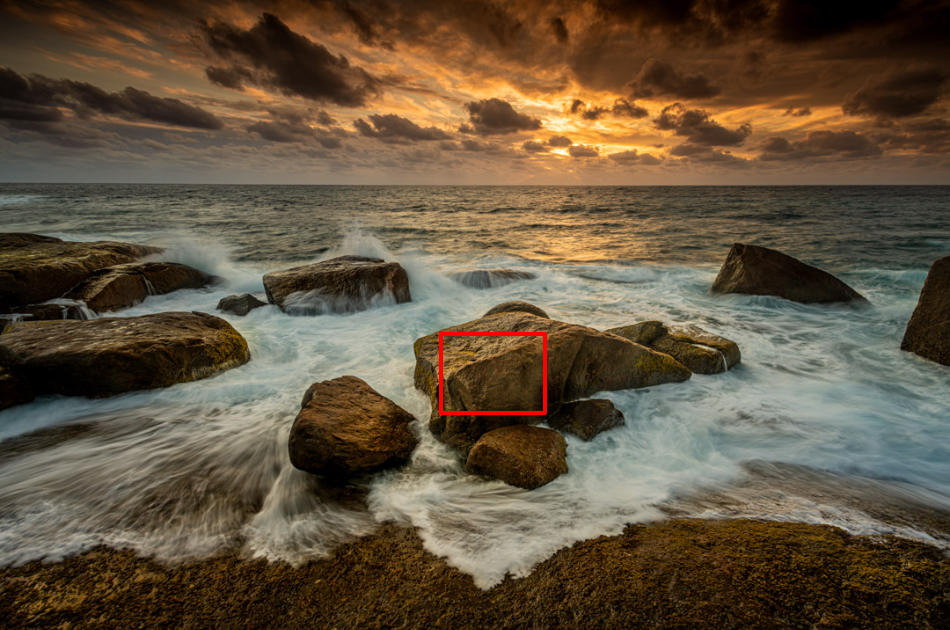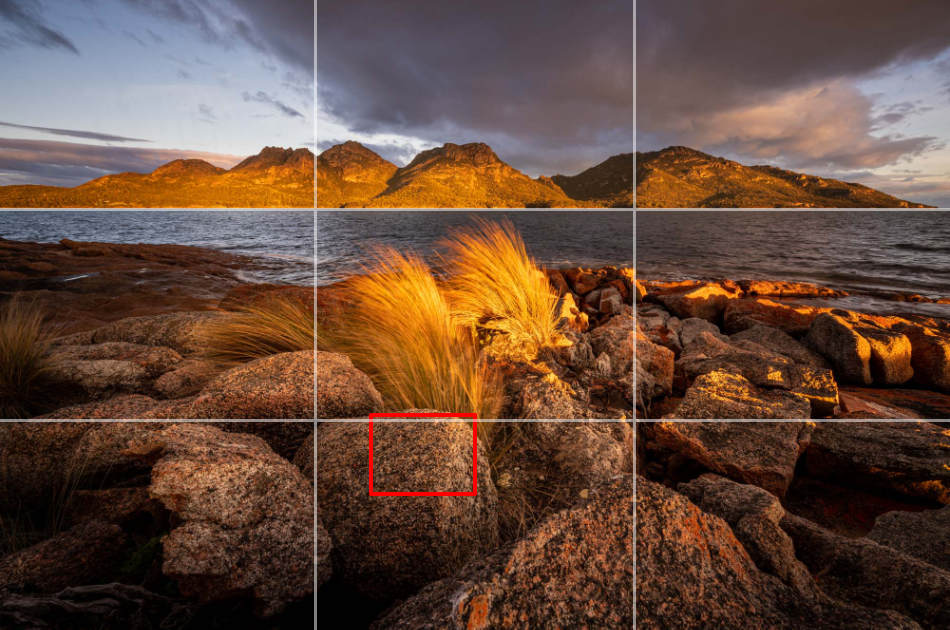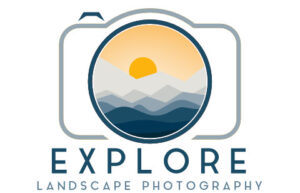You’ve found a composition you like, and the light is perfect, but you want to nail the focus, so you capture a tack-sharp photo.
Where should you focus a landscape image?
For landscapes with some foreground, position the focus point on an element roughly one-third of the way up the image that’s not in shadow. Use a large depth of field with an aperture between f 1/11 to f 1/16. This will ensure the entire scene will be sharp, from the foreground to the background.
But there are different types of landscapes, and you need to consider the style of the image you’re creating.
Let’s go through some of the common types of landscape scenes.
Where to Focus for Landscape Photography?
Where to Focus a Grand Vista Landscape with a Wide Angle Lens
Imagine a landscape that is an impressive view, with foreground, mid-ground, and background elements creating plenty of depth. I regard this as a typical landscape scene.
To engage the eye of the viewer, you want to have the entire scene in focus from the closest object to the camera in the picture through the parts of the image that is furthest away.
To accomplish this, you need a Depth of Field (the distance from the camera in which objects are in focus) that covers all of the landscape in the frame.

If no elements are within a couple of meters from the camera, an aperture of around f 1/11 is suitable, see the image above. If objects appear in the frame within a few meters, your depth of field needs to cover a larger area using an aperture closer to f 1/18, see the image below.
With your Depth of Field set, focus on an object up roughly one-third of the image from the bottom of the frame to ensure the landscape behind where you focused through to infinity will be sharp, and the scene immediately in front of that point is also in focus.
With the focus set to Autofocus Single Point (AF-S), move the focus point on your camera over a part of the scene around a 1/3 up the frame that isn’t in complete darkness.
Most cameras use phase detection or contrast focus, or a combination of the two, to focus the image automatically.
The lighter and more contrast the portion of the scene you select to focus on has on it, the easier it will be for the camera to grab focus.

I captured the image above, looking at The Hazards across Coles Bay in Tasmania with rocks in the foreground and mid-ground and the Hazards mountain range in the background. With a sufficient Depth of Field, using an aperture of f 1/16, I could focus on a rock around one-third up the frame with some texture so the camera could easily focus the scene.
Notice that I didn’t choose to focus on the reeds in the middle of the image because they were moving. We’ll cover that in more detail below.
Where to Focus in a Landscape using a Telephoto Lens?
Using a longer Telephoto lens to pick out a smaller portion of the landscape is a great way to create a simple, more intimate image.
But where should you focus?
Position the focus point on an element in the photo with some contrast, light, or texture to aid the camera in autofocusing correctly. In this scenario, you can focus anywhere in the frame, and the entire scene will be sharp with a relatively small Depth of Field.
Images captured with a telephoto lens often won’t have a foreground or mid-ground. Instead, all the elements in the frame are a similar distance away from the camera.
So the Depth of Field required can be smaller while still ensuring the entire scene is in focus. An aperture between f 1/5.6 to f 1/8 will be enough in most cases.
But if in doubt, choose to focus on the main subject of your photo because that’s where you want the viewer’s eye to go. So that’s the most important part of the image to be the sharpest.

In this shot of the mountain peaks around Mt Cook in New Zealand, I positioned the focus point on the part of the mountain that’s in some light and has contrast. This will give the camera the best chance to focus the scene correctly.
This approach also ensures that the main interest in the photo, the mountain peak, will be in focus.
What is the Hyperfocal Distance?
The Hyperfocal Distance is the distance in front of the camera at which point the camera can be focused on, so any object from halfway between the Hyperfocal Distance and the camera through to infinity is in focus.
A Hyperfocal Distance for a shot is calculated by considering the focal length of the lens, the aperture used, and the size of the sensor.

Should you use the Hyperfocal Distance when Focusing a Landscape Image?
It isn’t necessary to use the Hyperfocal Distance and still have the whole scene in focus. While calculating the Hyperfocal Distance will give you a precise point, in practice, if you focus the camera in the general area with a sufficient DoF, the entire landscape within the frame will be in focus.
For this reason, it’s adequate to position your focus point around one-third of the way up the image from the bottom of the frame.
What should I Focus on for a Landscape Picture?
So we’ve established where within the frame you should focus.
But what exactly should you focus on?
Most modern cameras use phase detection, contrast focusing, or a combination of both when automatically focusing a scene.
To give the camera the best chance to lock focus correctly, select an object or part of the object in the scene with some light on it so the camera can pick it up.
The object in the scene should be stationary. Moving elements like leaves in the breeze or waves could cause your camera to miss focus. Similarly, the area you focus on should be clear of other features moving over or between it and the camera.
For the image below, I had a few rocks in the foreground that I could choose to focus on. Focus point one, however, had water rushing over it which would have made it difficult for the camera to autofocus. Focus point two was a better option as it was clear of any water, so the camera could lock focus easily.

The more light cast on the subject, the easier it will be for the camera to detect that it’s in focus.
It doesn’t have to be the entire subject, but rather a part of the object that is clear of distraction, with some contrast or texture.
What are the Best Focus Settings to use for Landscapes?
Ensure your camera is in Autofocus mode, Single focus (AF-S), with the focus point set to the smallest area or one step bigger. This will allow you to accurately pinpoint the exact spot in the landscape you wish to focus on.
I recommend using Back Button Focus to make moving from Auto to Manual focus easier.
How to Check your Focus for a Landscape Image?
Once you’ve selected where to focus and you’ve autofocused the camera, you should always check to see if the image you’re about to take is in focus.
Some cameras have a focus indicator mode that you can turn on to show which parts of the scene are in focus. However, this is only going to give you part of the picture.
I prefer to use Live View and punch into the image on the back LCD screen. I zoom 100% in on the part of the scene I selected to focus on to check it is sharp. This tells me if the camera focused correctly.
I then move the other areas of the image that I also want in focus, from the foreground to the background, to check those parts are also sharp. This tells me my Depth of Field is correct.
QUICK RECAP
For a landscape with some foreground, taken with a wide-angle lens, focus on an object around one-third up the image.
A landscape captured with a telephoto lens should be focused on a bright element that has some contrast or texture so the camera can grab focus.
Hyperfocal Distance can calculate a precise distance from the camera at which to focus. However, it’s unnecessary as focusing roughly 1/3 from the bottom of the image with an appropriate DoF is enough to get the entire scene in focus.
